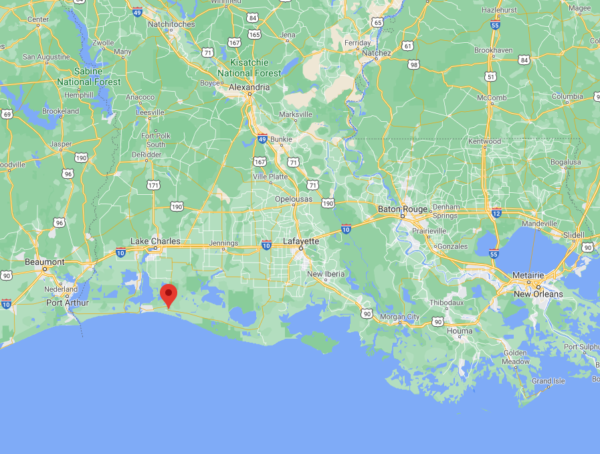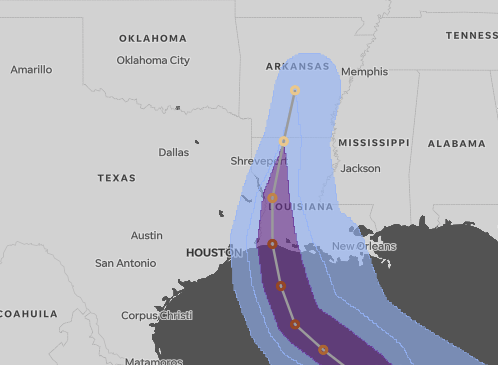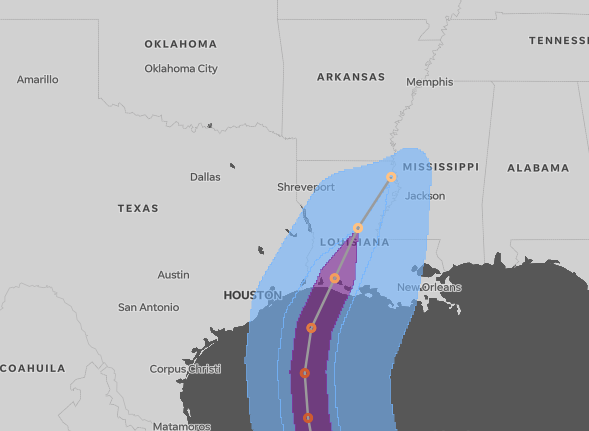The Economic Impact of Flooding, Part 1:
After Hurricane Laura and Hurricane Delta
This blog is the first in a three-part series on the lasting economic impact of repeat flooding on American cities and towns.
For citizens of the Gulf Coast, back-to-back storms are no longer unusual during the annual hurricane season, but it is less usual for two storms to make landfall in the same place in close succession.
In the first week of October 2020, Hurricane Delta landed in Creole, Louisiana on the same territory where Hurricane Laura had caused widespread destruction six weeks earlier. Today, we’re looking back at what made the initial response to Hurricane Delta so challenging, how this repeat flooding may impact the local economy, and how these compounding disasters can inform ongoing flood preparations.
A High Tolerance for High Flood Risk: Creole, Louisiana

The most recent count we could locate estimates that 660 residents live in Creole, Louisiana – double the population of this gulfside hamlet in 2010. Located just south of Lake Charles, there are so few home sales here that it’s difficult to track the change in housing prices from a distance, but that doesn’t mean there is a total lack of data on this town that happened to be in the middle of 2020’s hurricane alley.
If you live far from the coasts and the risk of hurricanes, you may wonder why anyone would set up a permanent residence on such a disaster-prone stretch of beach, but for many of the residents of southern Louisiana, this is simply home.
The risks of lasting damage to their houses and communities are accepted as part of the risk landscape, and knowing when to shelter in place or evacuate is learned through experience. But this doesn’t mean insurance agents can’t help support homeowners with a strong sense of local disaster awareness by talking with them about their flood risk – more on that later.
Before these two hurricanes hit, the town was vulnerable to storms and as vulnerable to COVID-19 as any other place in America.
A Tale of Two Storms: Hurricane Laura and Hurricane Delta

On August 27, Hurricane Laura made landfall about 15 miles from Creole, Louisiana as a Category 4 hurricane with 150 mph winds. The storm surge was forecast to be “unsurvivable” and measured over 15-feet in some places. Residents from southeastern Louisiana to Galveston, Texas were ordered to evacuate, including folks in Creole.
Laura delivered the massive flooding event that meteorologists predicted, and many residents had yet to return to their homes on the coast by the time Hurricane Delta turned toward Creole five weeks later.
Many properties were still uninhabitable in the first week of October 2020, and aerial photos of Delta’s damage show roofs already covered in blue tarps not due to a quick local response to new damage but leftover from the destruction Laura’s winds brought in August.

Forty-three days after Laura, Hurricane Delta made landfall as a Category 2 storm that delivered 101 mph winds and a 9-foot storm surge to the recently battered coast.
While Delta was less severe than Laura, it still knocked out power for over 600,000 residents in southern Louisiana and eastern Texas, which further hampered recovery efforts and it took days to restore electricity to many coastal residents due to high floodwaters.
The New York Times reported that the response to Delta was complicated because, “thousands of families were still in hotels (makeshift shelters) after Laura. there were 9,441 Louisiana residents in shelters, of which 935 were Delta evacuees.”
This raises the question: how can communities that don’t have time to recover between storms prepare to withstand a future?
While there was no time to make critical repairs between hurricanes or begin to think about rebuilding, this is the very type of compounding crisis that points to the importance of advocacy for vulnerable residents to hold not just hurricane insurance but adequate flood insurance policies.
The Economic Impact of Repeat Flooding in Creole, Louisiana
The most obvious economic impact of flooding, especially repeat flooding, is that not all residents return and many potential homebuyers will see the area as less desirable (and potentially less habitable as sea levels rise).
But the immediate economic impacts of storms on real estate values are not what you might expect.
A 2008 CRE study of 54 zip codes in Louisiana – four of which were impacted by two hurricanes – found “that during the first two quarters following a major hurricane, changes in home prices and transaction volume in the affected Zip Codes experience a temporary relative decline, followed by a positive correction.”
This was supported by an often-cited 2010 report by the Federal Reserve Bank of Dallas. Its summary on this subject is worth reading in full:
“… [T]he typical hurricane strike raises real house prices for some years, with a maximum effect of between 3% to 4% three years after the event. During the first two quarters following a major hurricane, they found that home prices and sales experience a temporary dip as homes are rebuilt, followed by a positive correction. Also during that period, you’ll see the supply of homes is still recovering, but demand returned quickly. As new and restored properties increase, local inventories, demand, and supply come into balance, and prices stabilize.”
Perhaps as significantly, this study also found that local incomes tend to be negatively impacted for several years following a hurricane, which can cause a significant drag on the local economy.
While it’s too soon to say whether this is true for home values in Creole and the rest of Cameron Parish, this narrative may help bolster home prices in the long term, or at least until the next storm.
Blog Articles
